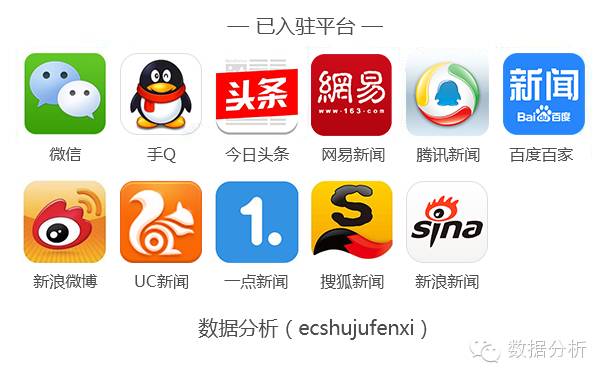推荐 :Pandas 2.0 数据科学家的游戏改变者(附链接)
本文约4800字,建议阅读12分钟
本文介绍了新版本pandas 2.0中引入的主要优势以及代码实现。


截图来自作者 2.0发行版看起来在数据科学社区造成了相当大的影响,很多用户都称赞新版本里的改进。
有趣的事实:你意识到这个发行版用了惊人的3年时间制作的吗?这就是我所说的“对社区的承诺”!
所以pandas 2.0带来了什么?让我们立刻深入看一下!
timeit df = pd.read_csv("data/hn.csv")12 s ± 304 ms per loop (mean ± std. dev. of 7 runs, 1 loop each)timeit df_arrow = pd.read_csv("data/hn.csv", engine='pyarrow', dtype_backend='pyarrow')329 ms ± 65 ms per loop (mean ± std. dev. of 7 runs, 1 loop each)
如您所见,使用新的后端使读取数据的速度提高了近 35 倍。其他值得指出的方面:
如果没有 pyarrow 后端,每个列/特征都存储为自己的唯一数据类型:数字特征存储为 int64 或 float64,而字符串值存储为对象;
使用 pyarrow,所有功能都使用 Arrow dtypes:请注意 [pyarrow] 注释和不同类型的数据:int64、float64、字符串、时间戳和双精度:
df = pd.read_csv("data/hn.csv")df.info()## RangeIndex: 3885799 entries, 0 to 3885798# Data columns (total 8 columns):# # Column Dtype# --- ------ -----# 0 Object ID int64# 1 Title object# 2 Post Type object# 3 Author object# 4 Created At object# 5 URL object# 6 Points int64# 7 Number of Comments float64# dtypes: float64(1), int64(2), object(5)# memory usage: 237.2+ MBdf_arrow = pd.read_csv("data/hn.csv", dtype_backend='pyarrow', engine='pyarrow')df_arrow.info()## RangeIndex: 3885799 entries, 0 to 3885798# Data columns (total 8 columns):# # Column Dtype# --- ------ -----# 0 Object ID int64[pyarrow]# 1 Title string[pyarrow]# 2 Post Type string[pyarrow]# 3 Author string[pyarrow]# 4 Created At timestamp[s][pyarrow]# 5 URL string[pyarrow]# 6 Points int64[pyarrow]# 7 Number of Comments double[pyarrow]# dtypes: double[pyarrow](1), int64[pyarrow](2), string[pyarrow](4), timestamp[s][pyarrow](1)# memory usage: 660.2 MB
timeit df["Author"].str.startswith('phy')851 ms ± 7.89 ms per loop (mean ± std. dev. of 7 runs, 1 loop each)%timeit df_arrow["Author"].str.startswith('phy')27.9 ms ± 538 µs per loop (mean ± std. dev. of 7 runs, 10 loops each)
pd.Index([1, 2, 3])Index([1, 2, 3], dtype='int64')pd.Index([1, 2, 3], dtype=np.int32)Index([1, 2, 3], dtype='int32')
df = pd.read_csv("data/hn.csv")points = df["Points"]points.isna().sum()# 0points[0:5]# 0 61# 1 16# 2 7# 3 5# 4 7# Name: Points, dtype: int64# Setting first position to Nonepoints.iloc[0] = Nonepoints[0:5]# 0 NaN# 1 16.0# 2 7.0# 3 5.0# 4 7.0# Name: Points, dtype: float64
df_null = pd.read_csv("data/hn.csv", dtype_backend='numpy_nullable')points_null = df_null["Points"]points_null.isna().sum()# 0points_null[0:5]# 0 61# 1 16# 2 7# 3 5# 4 7# Name: Points, dtype: Int64points_null.iloc[0] = Nonepoints_null[0:5]# 0# 1 16# 2 7# 3 5# 4 7# Name: Points, dtype: Int64
pd.options.mode.copy_on_write = False # disable copy-on-write (default in pandas 2.0)df = pd.read_csv("data/hn.csv")df.head()# Throws a 'SettingWithCopy' warning# SettingWithCopyWarning:# A value is trying to be set on a copy of a slice from a DataFramedf["Points"][0] = 2000df.head() # <---- df changes
pd.options.mode.copy_on_write = Truedf = pd.read_csv("data/hn.csv")df.head()# Throws a ChainedAssignmentErrordf["Points"][0] = 2000# ChainedAssignmentError: A value is trying to be set on a copy of a DataFrame# or Series through chained assignment. When using the Copy-on-Write mode,# such chained assignment never works to update the original DataFrame# or Series, because the intermediate object on which we are setting# values always behaves as a copy.# Try using '.loc[row_indexer, col_indexer] = value' instead,# to perform the assignment in a single step.df.head() # <---- df does not change
pip install "pandas[postgresql, aws, spss]>=2.0.0"import pandas as pdfrom ydata_profiling import ProfileReport# Using pandas 1.5.3 and ydata-profiling 4.2.0timeit df = pd.read_csv("data/hn.csv")10.1 s ± 215 ms per loop (mean ± std. dev. of 7 runs, 1 loop each)%timeit profile = ProfileReport(df, title="Pandas Profiling Report")4.85 ms ± 77.9 µs per loop (mean ± std. dev. of 7 runs, 100 loops each)%timeit profile.to_file("report.html")18.5 ms ± 2.02 ms per loop (mean ± std. dev. of 7 runs, 1 loop each)# Using pandas 2.0.2 and ydata-profiling 4.3.1timeit df_arrow = pd.read_csv("data/hn.csv", engine='pyarrow')3.27 s ± 38.1 ms per loop (mean ± std. dev. of 7 runs, 1 loop each)%timeit profile_arrow = ProfileReport(df_arrow, title="Pandas Profiling Report")5.24 ms ± 448 µs per loop (mean ± std. dev. of 7 runs, 100 loops each)%timeit profile_arrow.to_file("report.html")19 ms ± 1.87 ms per loop (mean ± std. dev. of 7 runs, 1 loop each)
性能优化:随着 Apache Arrow 后端的引入、更多的 numpy dtype 索引和写入时复制模式; 增加灵活性和自定义性:允许用户控制可选的依赖项并利用 Apache Arrow 数据类型(包括从一开始的可空性!); 互操作性:也许是新版本的一个不太“广受赞誉”的优势,但影响巨大。由于 Arrow 是独立于语言的,因此内存中的数据不仅可以在基于 Python 构建的程序之间传输,还可以在 R、Spark 和其他使用 Apache Arrow 后端的程序之间传输!
https://medium.com/towards-data-science/pandas-2-0-a-game-changer-for-data-scientists-3cd281fcc4b4?source=topic_portal_recommended_stories---------2-85----------machine_learning----------30a1af14_d40c_416a_bc92_b752b8fd806c-------

关注公众号:拾黑(shiheibook)了解更多
[广告]赞助链接:
四季很好,只要有你,文娱排行榜:https://www.yaopaiming.com/
让资讯触达的更精准有趣:https://www.0xu.cn/
 关注网络尖刀微信公众号
关注网络尖刀微信公众号随时掌握互联网精彩
- 1 中法友谊蕴山水 7904350
- 2 你以为的进口尖货 其实早已国产了 7808092
- 3 劲酒如何成了年轻女性的神仙水 7711844
- 4 盘点2025大国重器新突破 7619260
- 5 “两人挑一担 养活半栋楼” 7519967
- 6 中美合拍《我的哪吒与变形金刚》首播 7426871
- 7 美军承认:击落美军战机 7333434
- 8 尖叫之夜直播 7238497
- 9 下周降温更猛还有大范围雨雪 7137001
- 10 周末去哪玩?雪场“不打烊” 7044242







 数据分析
数据分析







